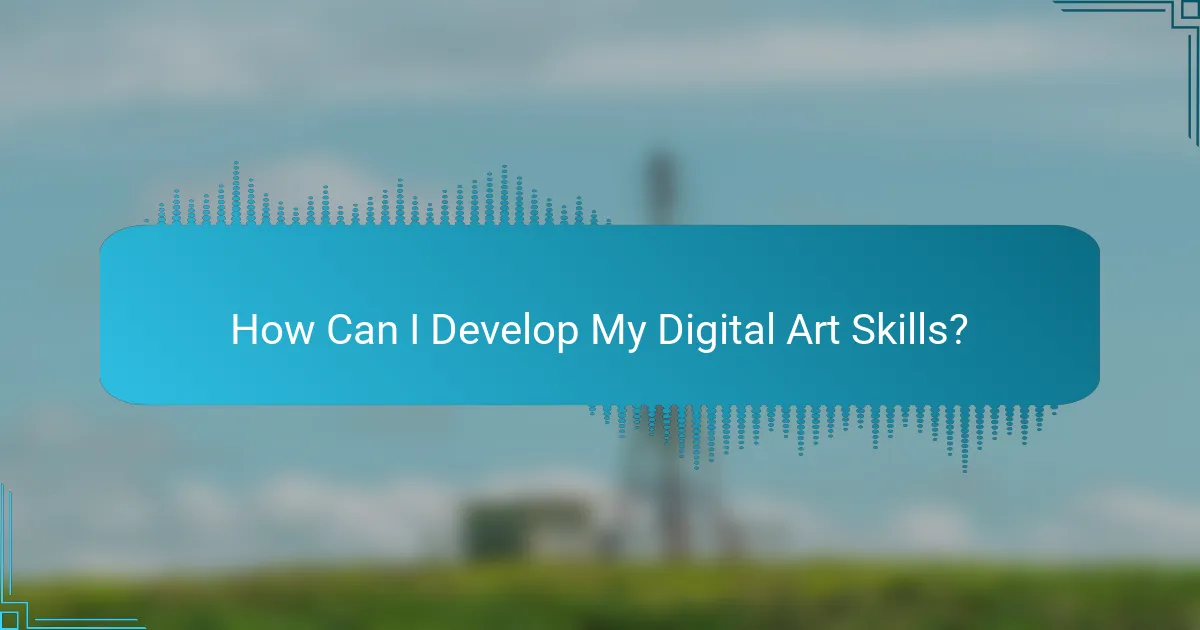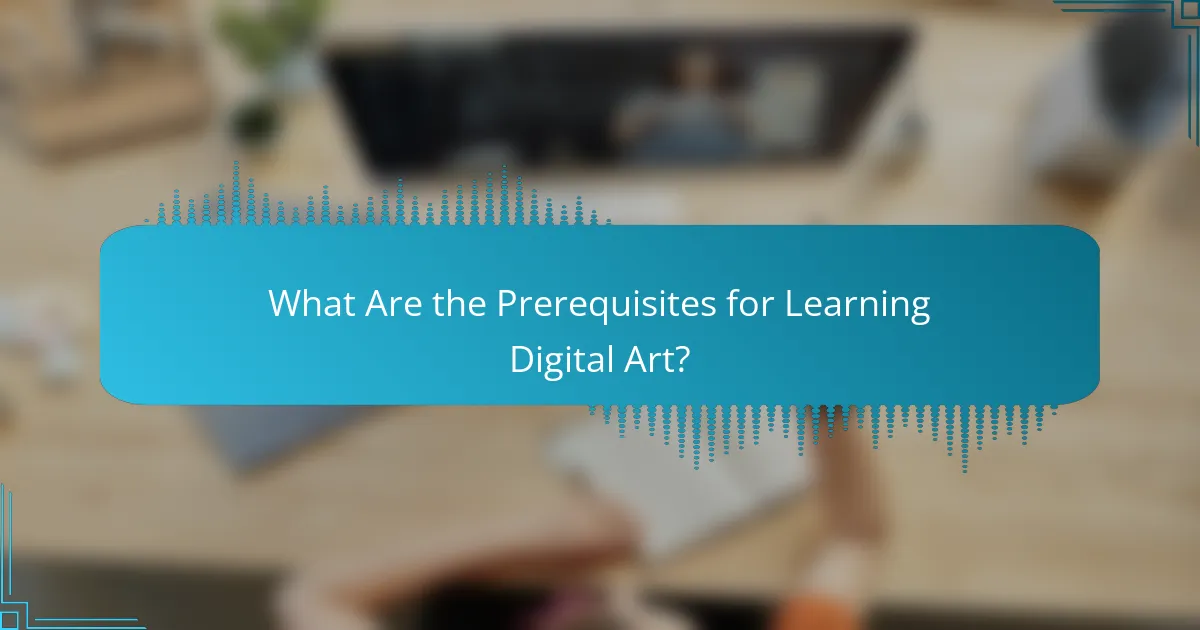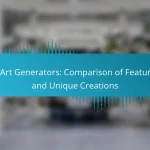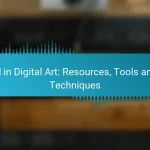Exploring digital art techniques through online courses can significantly enhance your creative skills and technical abilities. Platforms like Skillshare, Udemy, and Coursera offer structured learning paths and practical projects tailored to various skill levels. By consistently practicing and engaging with community feedback, you can refine your artwork and discover new methods such as layering and color theory.

What Are the Best Online Courses for Digital Art Techniques?
The best online courses for digital art techniques offer structured learning paths, practical projects, and access to experienced instructors. Platforms like Skillshare, Udemy, Coursera, LinkedIn Learning, and Domestika provide a variety of options tailored to different skill levels and artistic interests.
Skillshare Digital Art Classes
Skillshare features a wide range of digital art classes that cater to beginners and advanced artists alike. Courses cover topics such as illustration, character design, and digital painting, often taught by industry professionals. Many classes include project-based assignments that allow you to apply what you learn immediately.
Consider subscribing to Skillshare for access to thousands of classes. The platform operates on a subscription model, typically costing around $15 per month, which can be more economical if you plan to take multiple courses.
Udemy Digital Painting Courses
Udemy offers a diverse selection of digital painting courses, focusing on various software like Adobe Photoshop and Procreate. Each course is individually priced, often ranging from $10 to $200, depending on the instructor and content depth. This allows you to choose specific courses that match your interests and budget.
Look for courses with high ratings and reviews to ensure quality. Many Udemy courses also come with lifetime access, so you can learn at your own pace and revisit materials as needed.
Coursera Graphic Design Specialization
Coursera provides a comprehensive Graphic Design Specialization that includes modules on digital art techniques. This series of courses, often created by universities, covers fundamental principles and advanced skills, making it suitable for those looking to build a solid foundation in graphic design.
Courses typically require a monthly subscription, which can vary based on the institution. Completing the specialization can also earn you a certificate, adding value to your professional portfolio.
LinkedIn Learning Digital Art Fundamentals
LinkedIn Learning offers courses focused on digital art fundamentals, including essential software skills and design principles. With a subscription model around $30 per month, you gain access to a library of courses that can enhance your digital art skills.
Utilize the platform’s personalized recommendations based on your interests and career goals. Many courses also include exercise files, allowing you to practice alongside the lessons.
Domestika Creative Projects
Domestika is known for its creative projects that emphasize artistic expression and practical skills in digital art. Courses are often project-based, encouraging you to create a portfolio piece while learning. Prices for individual courses generally range from $10 to $50.
Explore courses taught by renowned artists, which can provide unique insights and techniques. The community aspect of Domestika also allows for feedback and interaction with fellow learners, enhancing the creative experience.

How Can I Develop My Digital Art Skills?
To develop your digital art skills, engage in consistent practice, seek community support, and actively incorporate feedback. These strategies will enhance your creativity and technical abilities, leading to more refined artwork.
Practice Regularly with Projects
Regular practice is essential for skill development in digital art. Set aside dedicated time each week to work on various projects, ranging from simple sketches to more complex compositions. This will help you build a portfolio and track your progress over time.
Consider participating in themed challenges or creating art based on prompts. This can provide structure and inspiration, pushing you to explore new techniques and styles that you might not try otherwise.
Join Online Art Communities
Joining online art communities can significantly enhance your learning experience. Platforms like DeviantArt, ArtStation, or social media groups allow you to connect with fellow artists, share your work, and gain insights into different artistic approaches.
Engagement in these communities often leads to collaborative projects, where you can learn from others and gain exposure to diverse artistic styles. Look for groups that align with your interests, whether they focus on specific software, genres, or skill levels.
Utilize Feedback from Peers
Receiving feedback from peers is crucial for improvement in digital art. Share your work within your community and ask for constructive criticism. Be open to suggestions and use them to refine your techniques and concepts.
When giving feedback to others, focus on both strengths and areas for improvement. This reciprocal process not only helps you grow but also fosters a supportive environment where everyone can thrive creatively.

What Are Effective Digital Art Techniques?
Effective digital art techniques encompass a variety of methods that enhance creativity and improve artistic skills. These techniques include layering, blending, brush customization, and applying color theory, all of which contribute to creating visually appealing digital artwork.
Layering and Blending Techniques
Layering and blending are fundamental techniques in digital art that allow artists to build depth and texture. By using multiple layers, artists can separate different elements of their artwork, making it easier to edit or adjust individual components without affecting the entire piece.
Blending techniques, such as using soft brushes or opacity adjustments, help create smooth transitions between colors and elements. A common approach is to start with a base layer and gradually add details, adjusting the opacity and blending modes to achieve the desired effect.
To avoid common pitfalls, ensure that layers are organized and named clearly. This practice simplifies navigation and editing, especially in complex projects.
Brush Customization in Procreate
Brush customization in Procreate allows artists to create unique textures and effects tailored to their style. Users can modify existing brushes or create new ones by adjusting settings like size, opacity, and grain.
Experimenting with brush settings can lead to discovering new techniques. For instance, increasing the spacing can create a dotted effect, while changing the flow can produce softer strokes. Artists should take advantage of Procreate’s brush library to save their custom brushes for future use.
To maximize the potential of customized brushes, regularly test them in different contexts and adjust based on the artwork’s needs. This iterative process enhances both skill and creativity.
Color Theory Application
Applying color theory is crucial for creating harmonious and impactful digital art. Understanding concepts like the color wheel, complementary colors, and color harmony can significantly influence the mood and effectiveness of a piece.
When selecting a color palette, consider using a limited range of colors to maintain cohesion. A common method is to choose one dominant color and two to three accent colors that complement it. This approach helps in creating a balanced composition.
Artists should also be mindful of color contrast, as it can affect visibility and focus. Using tools like Adobe Color or Coolors can assist in generating appealing color schemes that align with the intended emotional tone of the artwork.

What Tools Are Essential for Digital Art Creation?
Essential tools for digital art creation include graphic tablets, software suites, and specialized applications that enhance precision and creativity. Selecting the right combination of these tools can significantly impact your workflow and the quality of your artwork.
Wacom Tablets for Precision
Wacom tablets are widely regarded as the gold standard for digital artists due to their pressure sensitivity and accuracy. They allow for natural drawing experiences, mimicking traditional pen and paper. When choosing a Wacom tablet, consider factors like size, resolution, and whether you prefer a screen or non-screen model.
Popular models include the Wacom Intuos for beginners and the Wacom Cintiq for professionals who want a built-in display. Ensure that the tablet is compatible with your operating system and preferred software to avoid any technical issues.
Adobe Creative Cloud Suite
The Adobe Creative Cloud Suite is a comprehensive collection of software tools essential for digital art, including Photoshop, Illustrator, and Fresco. Each program serves a unique purpose, from photo editing to vector graphics, providing a versatile platform for artists. A subscription model offers access to the latest updates and features.
When using Adobe tools, familiarize yourself with shortcuts and workflows to enhance efficiency. Take advantage of online tutorials and community forums to learn advanced techniques and tips that can elevate your artwork.
Clip Studio Paint for Illustrators
Clip Studio Paint is a favorite among illustrators and comic artists for its robust features tailored to drawing and painting. It offers customizable brushes, vector tools, and 3D models to aid in perspective and anatomy. The software is available as a one-time purchase or a subscription, making it accessible for various budgets.
To maximize your use of Clip Studio Paint, explore its extensive library of brushes and materials, which can help you achieve specific styles. Regularly check for updates and community resources to stay informed about new features and techniques that can enhance your projects.

What Are the Prerequisites for Learning Digital Art?
To learn digital art effectively, you should have a basic understanding of traditional art concepts and familiarity with digital tools. While prior experience in drawing or painting can be beneficial, many online courses cater to beginners.
Basic Art Skills
Having foundational skills in drawing, color theory, and composition is crucial for digital art. These skills help you create visually appealing pieces and understand the principles behind effective artwork. If you’re new to art, consider practicing with traditional mediums before transitioning to digital formats.
Familiarity with Digital Tools
Understanding the software and hardware used in digital art is essential. Popular programs include Adobe Photoshop, Corel Painter, and Procreate, while a good graphics tablet can enhance your workflow. Take time to explore tutorials and guides specific to the tools you choose to familiarize yourself with their features.
Access to Online Resources
Access to online courses, tutorials, and communities can significantly enhance your learning experience. Platforms like Skillshare, Udemy, and YouTube offer a variety of resources tailored to different skill levels. Engaging with online forums or social media groups can also provide support and feedback from fellow artists.


